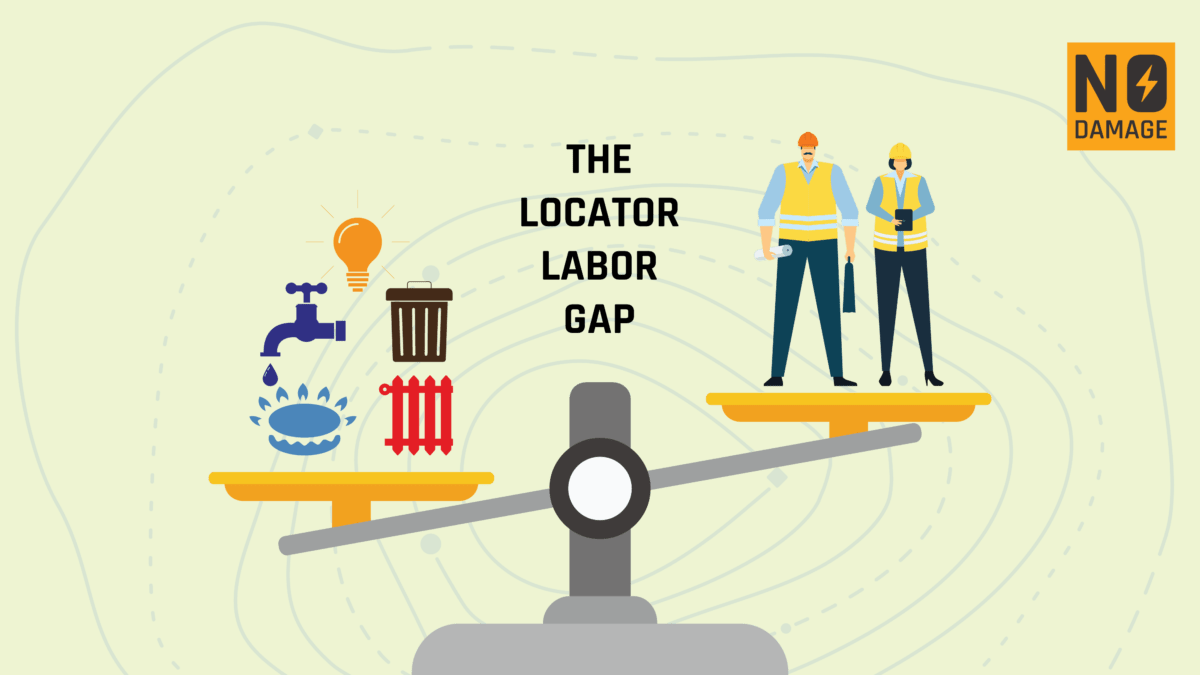
"In 2025, the construction industry will need to bring in nearly 454,000 new workers on top of normal hiring to meet industry demand, and that’s presuming that construction spending growth slows significantly next year." - ABC
I follow some of the BuiltWitt guys and they're pretty passionate about communicating the labor gap in construction - I think we've got a similar issue in damage prevention! The utility locating industry is grappling with a significant labor shortage, driven by an aging workforce, a lack of skilled workers, and an ever-increasing demand for services. As we struggle to attract and retain talent, (mainly in the field) I wonder: Can technology fill the gap?
Technology as a Solution
Despite advances in technology, the law still mandates physical paint markings for every utility locate, which means that each locate job requires precise, on-the-ground work. Given the labor shortages in the field, optimizing a locator’s day becomes critical to maximizing efficiency and minimizing time spent on each ticket.
Improving aspects like optimized routing, real-time communication, and data capture can make a significant difference. Smarter routing ensures locators spend less time in transit, allowing them to complete more locates in a day. Enhanced data capture—through integrated tablets or digital apps—allows locators to document markings quickly and accurately, reducing the need for rework and supporting regulatory compliance.
Ultimately, leveraging tech solutions to streamline these daily tasks can help stretched teams meet demand while still providing the required, reliable, on-the-ground paint markings that the law demands. To address the growing labor gap, advanced technologies are stepping up to fill critical aspects of the job:
Digital Twin Technology and IoT: Digital twins, combined with IoT sensors, are transforming the approach to infrastructure management and maintenance. By creating virtual replicas of physical assets, companies can monitor real-time performance and detect issues remotely. For instance, digital twins allow teams to foresee structural weaknesses or maintenance needs, reducing the need for frequent on-site inspections and enabling targeted deployment of available labor.
Artificial Intelligence (AI) and Predictive Analytics: AI and predictive analytics are reshaping how utility locating and maintenance scheduling occur. These technologies process large datasets to anticipate equipment wear, usage patterns, and potential failures, enabling preemptive solutions that minimize labor demand. For example, predictive analytics can help prioritize areas in need of immediate attention, reducing downtime and increasing labor efficiency.
3D Mapping and Imaging Technologies: 3D mapping tools, such as LiDAR and ground-penetrating radar, offer precise imaging of underground utilities and site conditions. By providing accurate visualizations, these tools can reduce the need for labor-intensive exploratory digging and manual measurements. This precision ensures resources are deployed effectively and only when truly necessary.
Enhancing Collaboration through Technology
Legal requirements for marking utilities in the field aren’t going anywhere—in fact, they're likely to remain as stringent as ever to protect public safety and workers in the field. With the infrastructure bill paving the way for a surge in new construction, the need for accurate and timely locates is only going to grow. This landscape calls for creative approaches to maximize efficiency, harnessing technology to help bridge the workforce gap and keep projects moving safely.
Tech-Driven Collaboration Tools for Improved Coordination
- Digital Platforms for Project Management: Real-time project management tools like Utilocate can enhance collaboration across multiple stakeholders, creating a shared, reliable reference for everyone involved. By offering instant updates and facilitating communication, these platforms help prevent miscommunications, improve project accuracy, and make it easier to manage high volumes of work.
- Data Integration and Visualization: Integrating data from diverse sources provides a holistic view of project areas, simplifying planning and execution. When locators, project managers, and construction teams all have access to the latest data, there’s less risk of errors, and safety is reinforced through better-coordinated site activities.
Balancing Tech and the Human Element The adoption of technology has undeniable potential, but challenges like training requirements, upfront costs, and change resistance can slow progress. The key lies in balancing the efficiencies of automation and digital tools with skilled workers’ expertise. While technology can handle routine tasks, the complex judgment required on-site still depends on experienced professionals.
The Future of Work in Utility Locating and Construction As technology continues to evolve, so too will job roles in locating and construction. The need for tech-savvy workers will grow, creating opportunities in fields like tech support, data analysis, and systems maintenance. This shift could mean fewer traditional roles and more specialized positions focused on leveraging advanced tools.
Conclusion So, can technology fill the labor gap in utility locating and construction? By enhancing both safety and productivity, technology offers some promising solutions. The challenge is to leverage these tools to support the essential work done by skilled teams, ultimately building a more resilient workforce ready to tackle the growing demands of modern infrastructure projects.
Share this Post











